Are Plush Toys Machine Washable? How to Clean Them Safely
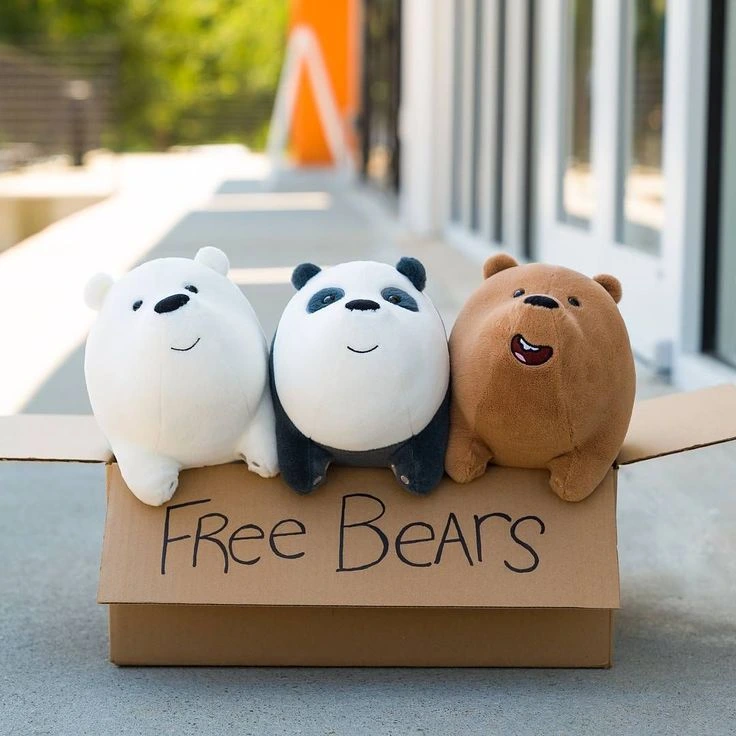
Plush toys are a comforting presence in many homes whether it’s a child’s favorite bedtime companion, a collector’s prized display piece, or a sentimental keepsake from years past. But no matter how cute or meaningful they are, plush toys eventually get dirty. From sticky hands and outdoor adventures to accidental spills and everyday dust, these soft companions need regular cleaning to stay fresh and safe. That leads many people to wonder: can you just toss them in the washing machine like other laundry? Let’s break it down. Are Plush Toys Machine Washable? Yes, many plush toys are machine washable, but not all of them. Whether or not a stuffed animal can be safely washed in a machine depends on several factors mainly the fabric used, the type of stitching, the stuffing, and any attached or internal components. While some toys are made to be durable and can handle a gentle machine wash, others may contain fragile parts like electronics, glued-on decorations, or delicate accessories that can get damaged in the washer. The best way to know for sure is to check the care label. Manufacturers usually include clear instructions if the label says “machine washable,” then you can proceed with confidence using the right cleaning method. If the label says “hand wash only” or doesn’t exist, you’ll need to examine the toy more closely and proceed with caution. What Plush Toys Are Usually Safe to Wash in a Machine Machine-washable plush toys are typically made of durable fabrics like polyester or cotton blends, and they have firmly stitched seams without fragile decorations. These toys often don’t include any electronic components or intricate embellishments. You can usually wash a plush toy safely in the machine if: But if any of those conditions are missing, it’s better to avoid machine washing. How to Wash Plush Toys in a Washing Machine the Right Way Machine washing plush toys needs to be done gently and carefully. Even if the label gives the green light, the toy should still be protected to prevent wear and tear. Here’s how to do it properly: Following these steps helps preserve the softness, color, and shape of the toy while keeping it hygienic. Can Plush Toys Go in the Dryer? Drying is often where things go wrong. Most plush toys should be air dried unless the care label specifically allows machine drying. High heat from the dryer can cause synthetic fibers to melt slightly or change shape, especially if the toy is made from faux fur or delicate fleece. If you want to speed up the process: But in general, laying the plush toy flat on a clean, dry towel in a well-ventilated space is the safest way to dry it. Also Read: What Is Plush Toys? Meaning, Uses, and Why They’re So Loved What to Do If the Plush Toy Has Electronics or Batteries? If your plush toy makes sounds, sings, lights up, or vibrates when pressed, it most likely contains electronic components that must be kept dry. Machine washing such toys can ruin the electronics and even pose a safety risk. For toys with electronic or battery-operated parts: In some cases, the electronic module can be removed before washing. If that’s possible, take it out and wash the outer plush layer according to the label’s instructions. How to Hand Wash Plush Toys (When Machine Washing Isn’t Safe) Hand washing is the safest route for most plush toys especially those that are delicate, handmade, vintage, or don’t have a care label. It takes a bit more time but significantly reduces the risk of damage. To hand wash a plush toy: This method is especially helpful for plush toys that have sentimental value or can’t easily be replaced. How Often Should You Wash Plush Toys? How frequently you wash plush toys depends on how often they’re used and under what conditions. A toy that your child sleeps with every night will need more frequent cleaning than one that sits untouched on a shelf. Here’s a general rule of thumb: Regular cleaning not only keeps plush toys looking fresh but also ensures they stay hygienic, especially for younger children who might mouth or cuddle them closely. Final Thoughts While many plush toys are machine washable, it’s not a one-size-fits-all situation. Always check the label, consider the materials and features of the toy, and use a cleaning method that preserves its structure and safety. Whether it’s a beloved teddy bear or a soft collectible, knowing how to clean it properly ensures it stays huggable and safe for years to come. If you’re looking for plush toys that are not only adorable but also easy to care for, Switts offers a variety of machine-washable plush toys designed with both kids and parents in mind. Our selection is made with durable fabrics, reinforced stitching, and thoughtful details, so your little one’s favorite companion can stay fresh, clean, and cuddly through everyday adventures. Let us know if you’d like help choosing the perfect plush for your needs, we’re here to make soft toys simpler to love and easier to care for.
How to Get Affordable Yet High-Quality Pins from a Trusted Custom Pin Supplier
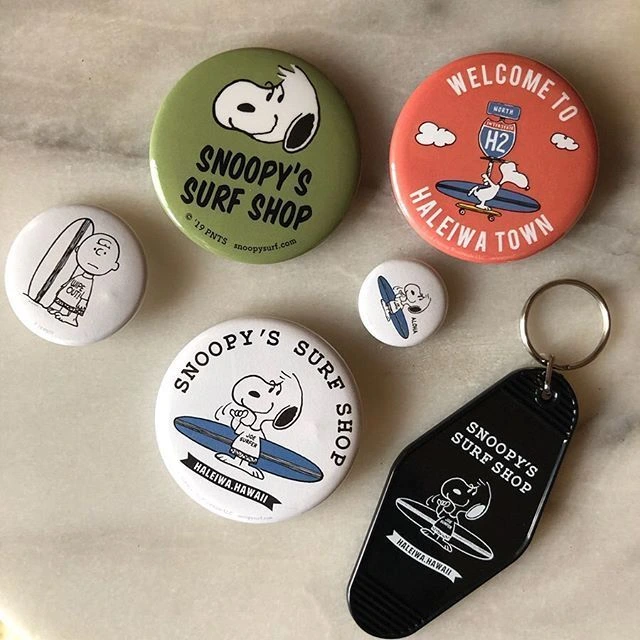
Custom pins are more than just accessories they’re powerful branding tools, memorable giveaways, and collectible keepsakes. But when you’re on a budget, it’s easy to think that quality has to be sacrificed for cost. The truth is, with the right custom pin supplier, you can have both: affordability and excellent quality. In this article, we’ll show you how to get high-quality pins without breaking the bank, and what to look for when choosing a custom pin supplier who delivers real value. Why Custom Pins Are Worth the Investment Custom pins are small but mighty. Whether you’re planning a company event, launching a campaign, or creating merchandise, pins give you: And with the right supplier, your investment goes even further. Tips to Get Affordable Yet High-Quality Pins 1. Choose the Right Materials for Your Budget Different pin types come with different price points: A good custom pin supplier will guide you toward options that balance quality with budget. 2. Order in Bulk for Better Pricing The more you order, the lower the cost per piece this is one of the biggest advantages of working with an experienced custom pin supplier. Production costs such as mold setup and labor are shared across the total quantity, which means bulk orders reduce your per-unit expense. If you’re planning multiple events, corporate distributions, or resale opportunities, ordering in bulk can significantly improve your ROI. Plus, with proper storage, your extra pins can be used over time without losing quality or value. 3. Use In-House Design Services Designing a custom pin from scratch can be time-consuming and expensive, especially if you have to hire a third-party designer who may not understand the technical constraints of pin production. That’s why it’s smart to work with a custom pin supplier that provides in-house design support. At Switts, we offer complimentary design assistance from polishing your logo to suggesting finishes and shapes that best suit your brand saving you both time and money while ensuring a production-ready design. 4. Watch Out for Hidden Fees Not all suppliers are transparent with pricing. Some may lure you in with low base prices but tack on additional fees for mold creation, revisions, rush orders, or even packaging. These hidden costs can quickly add up and exceed your budget. Always request a full, itemized quotation before committing. A reputable custom pin supplier like Switts will provide clear, upfront pricing so you can make confident decisions without unpleasant surprises. 5. Work with a Local Custom Pin Supplier Choosing a custom pin supplier in Singapore offers many practical advantages, especially for local businesses, schools, and event organizers. You save on international shipping fees, avoid import delays, and enjoy better communication throughout the design and production process. Local suppliers like Switts also understand the regional market and customer preferences, allowing for faster turnaround times and more responsive service. Whether you need a small revision or last-minute support, working with a local partner ensures your project stays smooth and stress-free. Why Switts Is the Right Choice As Your Custom Pin Supplier At Switts, we specialise in making affordable custom pins without cutting corners. Here’s how we do it: We’ve worked with schools, startups, corporates, and event organisers to deliver pins that are both cost-effective and premium in quality. Final Thoughts Affordable doesn’t have to mean “cheap” and high-quality doesn’t have to mean “expensive.” With the right planning and the right custom pin supplier, you can have both. If you’re ready to create custom pins that reflect your brand without overstretching your budget, we’re here to help. Contact Switts today and let’s bring your design to life.
What Is Plush Toys? Meaning, Uses, and Why They’re So Loved
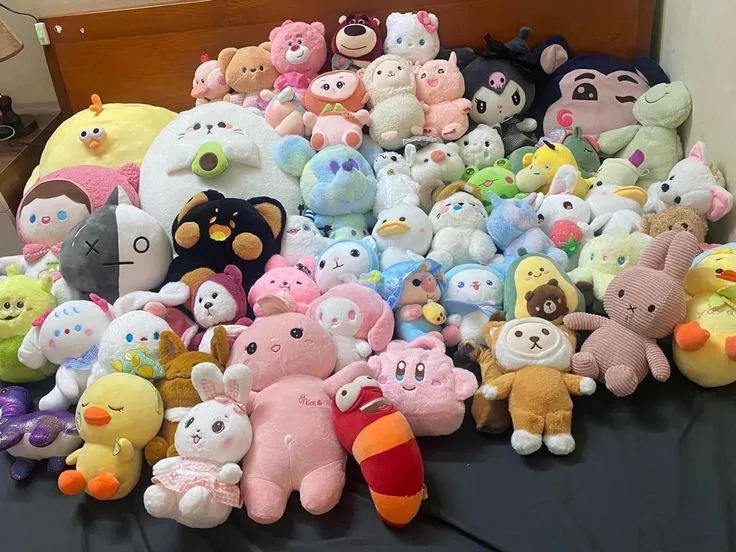
Plush toys have been a beloved part of childhood and beyond for generations. Soft, huggable, and full of charm, these toys bring comfort, joy, and even a touch of nostalgia to people of all ages. Whether shaped like animals, characters, or fantasy creatures, plush toys hold a special place in homes, hearts, and cultures around the world. But what exactly are plush toys, and why do they remain so popular? Let’s take a closer look. What Is Plush Toys? Plush toys, also known as stuffed toys, are soft, cuddly objects typically made from textiles like cotton, velvet, or synthetic fibers and filled with soft stuffing such as polyester fiberfill. Often shaped like animals, characters, or fantasy creatures, plush toys are cherished by people of all ages not just children. These toys are popular gifts, collectibles, comfort objects, and even decorative items. A Brief History of Plush Toys The origins of plush toys date back to the late 19th and early 20th centuries. The concept gained global popularity when the Teddy bear was created around 1902, inspired by a cartoon about U.S. President Theodore Roosevelt. Germany’s Steiff Company is credited as one of the earliest manufacturers of plush animals. Since then, plush toys have evolved from simple animal shapes to a wide variety of imaginative and culturally relevant designs, including movie characters, mascots, and even personalized plush creations. Materials Used in Plush Toys Plush toys are named after the fabric used in their making plush, a soft and luxurious textile. Modern plush toys use a combination of materials: High-quality plush toys often go through safety testing, especially those made for infants and toddlers, to ensure they are non-toxic, flame-resistant, and securely stitched. Types of Plush Toys Plush toys come in a wide array of styles and categories: Each type has a unique appeal depending on the age group and purpose be it emotional support, playtime, or aesthetic decoration. Also Read: 8 Most Popular Plush Toys in 2025: Animal Plushies Are Favorite! What Makes Plush Toys Special? Plush toys are more than just soft figures they carry emotional and cultural significance that resonates across all ages. Their lasting appeal comes from a combination of comfort, meaning, and versatility: Their emotional value and wide range of uses are what make plush toys truly special. Are Plush Toys Only for Children? Not at all. While plush toys are traditionally linked to childhood, their appeal extends well beyond kids. Teenagers often collect character plushies from anime, movies, or games as part of their fandom and room decoration. Adults may keep plush toys for comfort, using them as travel pillows, bed or sofa accents, or even as emotional support items to relieve stress and anxiety. Many also see plush toys as nostalgic keepsakes or collectibles, with limited-edition releases drawing serious attention from hobbyists. In the corporate world, businesses use branded plush toys as creative promotional items or company mascots. Whether for comfort, expression, or branding, plush toys are loved by people of all ages. How to Choose the Right Plush Toy When selecting a plush toy, especially as a gift, consider the following: Final Thoughts Plush toys are more than just soft companions they are emotional touchstones, cherished memories, and versatile gifts. From childhood teddy bears to collectible plush figures, they continue to bring joy and comfort to millions across the globe. Whether you’re buying for a child or adding to your collection, there’s a plush toy out there that can speak to your heart.
Why Do People Shake Blind Boxes? (And How to Choose One Right)
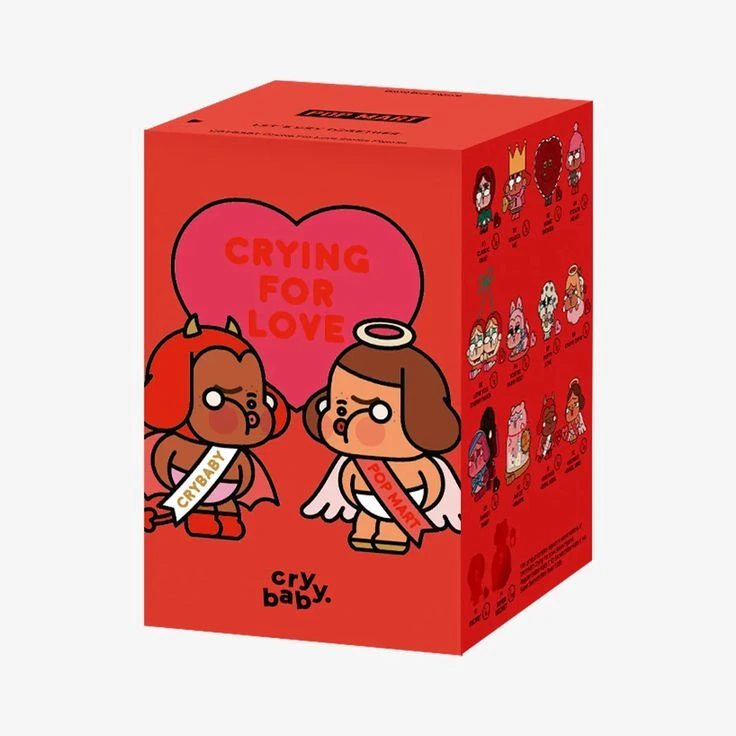
People shake blind boxes because they’re trying to guess what’s inside without opening them. Since blind boxes are sealed and the contents are random, shaking helps buyers listen for size, weight, or sound clues that might hint at the item inside. It’s a popular (though not always accurate) method to improve their odds of getting a specific toy or figure. The Curiosity Behind Shaking Blind Boxes Shaking a blind box is like shaking a wrapped gift. You don’t know what’s inside, and that mystery builds excitement. For collectors, especially those hunting for rare or “chase” items, shaking becomes a form of detective work. They might listen for: It’s not a perfect science, but for some fans, it’s part of the fun. Is Shaking Blind Boxes Cheating? It depends on who you ask. Some see it as a harmless habit, others believe it takes away from the surprise. Retailers sometimes discourage shaking because it can damage the item inside or disturb other shoppers. Still, many people see it as part of the “blind box culture” a way to interact with the product before purchasing. Does Shaking Really Help? Sometimes. Experienced collectors may become good at identifying patterns, especially when: However, brands often design packaging to make all boxes feel and weigh the same to maintain fairness. Some even add padding or misleading weights. Also Read: What Is the Psychology of Blind Boxes? Tips to Choose a Blind Box (Without Opening It) If you’re hoping to increase your odds of pulling your favorite piece without ruining the surprise, here are some practical tips: Final Thoughts People shake blind boxes because they want to outsmart the mystery. Whether it works or not, it adds to the excitement and anticipation. The unpredictability is exactly what makes blind boxes addictive. Looking to start or grow your collection? Switts offers beautifully designed blind boxes with exciting characters, quality builds, and that thrilling “what will I get?” moment every time you open one.
What Is the Psychology of Blind Boxes?
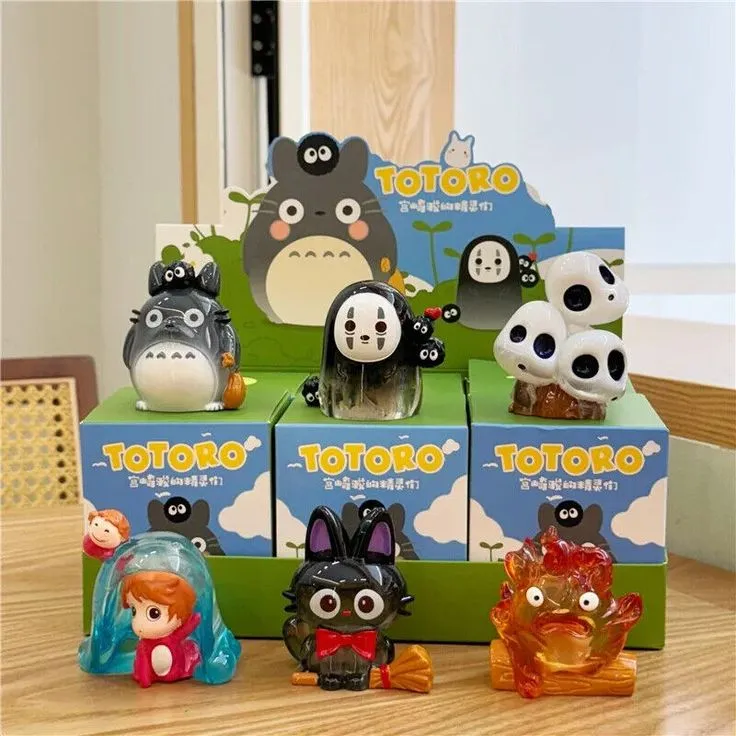
Blind boxes have taken the retail and collectibles world by storm, from anime figures and art toys to cosmetics and trading cards. The concept is simple: you purchase a sealed product without knowing exactly what’s inside. This element of mystery has proven to be more than just a gimmick, it taps deep into human psychology. But what exactly makes blind boxes so irresistible? The answer lies in more than just curiosity. Let’s explore the psychology of blind boxes through five different lenses, each revealing a powerful reason behind their global appeal. What Is the Psychology of Blind Boxes? 1. The Consumer Mind: How Uncertainty Fuels Anticipation and Reward At the heart of every blind box is one core mechanic: uncertainty. Our brains are hardwired to seek resolution when faced with the unknown. When consumers don’t know what they’ll receive, their curiosity becomes a powerful motivator to make the purchase. This taps into what psychologists call the variable reward system the same concept that drives slot machines and gacha games. The brain releases dopamine, a pleasure-inducing neurotransmitter, not just when we get a reward, but in anticipation of it. That rush keeps people coming back for more, especially when there’s a chance to score something rare or limited. 2. The Brand Perspective: Psychological Triggers Used in Product Design Blind boxes aren’t just fun, they’re strategically engineered by companies to maximize emotional response and increase sales. Brands often create tiered rarity levels, where common items are easy to get, and rare ones are difficult, triggering fear of missing out (FOMO) and encouraging repeated purchases. They also design collections that exploit completionist behavior. If there are 12 figures in a set, getting 10 isn’t enough, many consumers will keep buying until they have them all. This taps into a sense of psychological closure and ownership, turning a casual shopper into a loyal, emotionally-invested collector. 3. The Parental Angle: How Blind Boxes Affect Children’s Behavior From a parenting perspective, blind boxes can be both exciting and concerning. Children experience a similar dopamine response to adults, but their impulse control is far less developed. The thrill of opening a mystery item can easily turn into compulsive buying if not managed carefully. Blind boxes also create the illusion of choice. Kids might think, “If I get one more, I’ll get the one I want,” not fully understanding randomness or odds. For some children, this can lead to disappointment, frustration, or even early signs of gambling-like behavior. Parental supervision and boundaries are critical in navigating this space responsibly. Also Read: 5 Reasons Why Blind Boxes Are So Popular 4. The Cultural Lens: Why Blind Boxes Are Bigger in Asia While blind boxes have become a global trend, their cultural roots are especially strong in East Asia, where the concept evolved from gashapon. Japanese capsule toys that have been popular since the 1970s. In these cultures, collecting miniature items and engaging in playful randomness is more socially normalized across all age groups. In contrast, Western cultures have historically favored transparency and consumer control, which made blind boxes feel novel or even controversial at first. However, thanks to the rise of social media and influencer culture, blind boxes have gained traction globally, transforming into a form of pop-culture entertainment. 5. The Ethical Viewpoint: Are Blind Boxes Just Child-Friendly Gambling? As blind boxes rise in popularity, ethical questions follow closely behind. Are they harmless fun, or are they preying on vulnerable consumers particularly children and teens? Some critics argue that blind boxes share too many mechanics with loot boxes in video games, which are already under legal scrutiny in multiple countries. They both rely on chance, include premium pricing for rare rewards, and encourage repeat spending to chase specific outcomes. While blind boxes don’t offer digital perks or resale value in the same way as loot boxes, they still present ethical concerns around manipulative design, lack of transparency, and psychological exploitation. Brands that want to maintain trust and credibility may need to adapt with clearer odds, age-appropriate marketing, or optional “open box” purchases. Social Media’s Role in Amplifying Blind Box Culture Blind boxes have exploded in popularity not just because of what’s inside, but because of how people share them. Platforms like TikTok, YouTube, and Instagram are filled with unboxing videos, rare pulls, and haul reviews. This creates a social loop, where viewers see the excitement, imagine themselves in that moment, and go out to buy their own blind boxes. The psychology here isn’t just about mystery, it’s about belonging. Watching others participate in blind box culture fuels community engagement, validation, and identity. Whether someone is a casual collector or a hardcore fan, social media makes blind box buying feel like being part of something bigger. Final Thoughts Blind boxes may seem like simple toys or collectibles, but their appeal runs deep into human psychology. They combine uncertainty, emotional reward, cultural influence, and clever marketing to create an experience that’s hard to resist. From consumers to parents, from brands to cultural analysts, everyone sees something different in the blind box phenomenon. Whether it’s a harmless indulgence or a behavior worth watching depends on how they’re marketed, used, and understood. At the end of the day, the most powerful thing inside a blind box may not be the toy, but the feeling it gives you.If you’re looking to explore that thrill for yourself, check out Switts curated collection of blind boxes, each one designed to surprise, delight, and keep you coming back for more.
Who Started Blind Boxes? The Origins of the Mystery Toy Craze
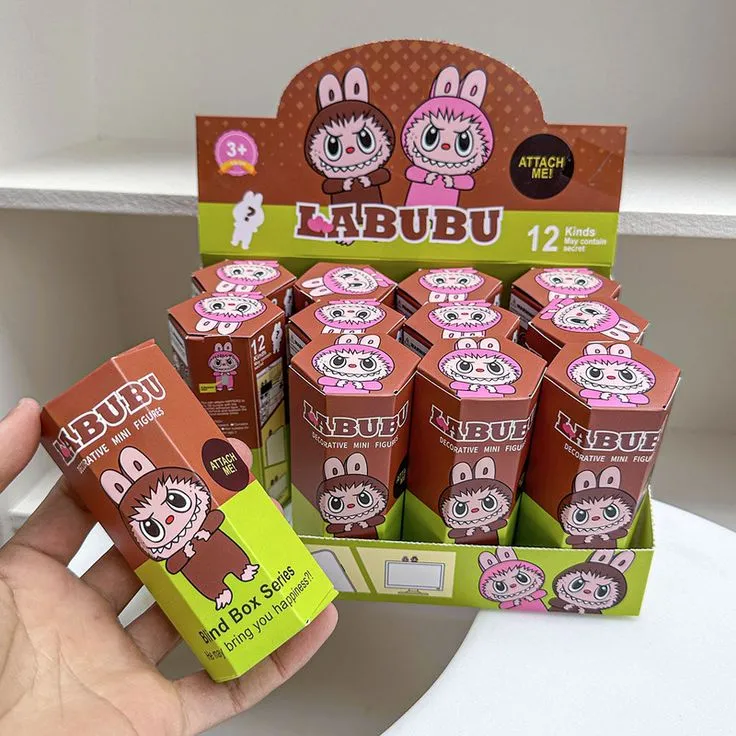
Blind boxes those small, sealed packages that hide a mystery toy or collectible inside, have become a global phenomenon, captivating both kids and adults alike. You don’t know what’s inside until you open it, which adds a layer of surprise, excitement, and even addiction for some collectors. Found in toy stores, online shops, vending machines, and even lifestyle boutiques, blind boxes have transformed the way people collect items, turning it into an experience of chance and anticipation. But who actually started this trend? To understand the origins of blind boxes, we have to look back to where the culture of mystery collectibles began, a story that leads us straight to Japan, and later, to the world of designer toys, pop culture, and viral unboxing moments. The Origin of Blind Boxes The blind box concept traces its roots back to Japan in the late 1980s and early 1990s, with the rise of gashapon (also spelled gachapon) capsule toys sold in vending machines. These machines dispensed random toys inside plastic eggs, sparking a collecting craze across all age groups. Japanese companies like Bandai and Takara Tomy popularized the format, especially by licensing anime, manga, and video game characters. While gashapon machines offered random toys, the blind box format toys in sealed boxes sold in stores evolved as a retail version of the same mystery principle. This packaging strategy created excitement and collectibility, much like trading cards or surprise chocolate eggs. Who Commercialized the Blind Box Concept? While Japan originated the concept, several companies helped bring blind boxes to the Western market: Also Read: 5 Reason Why Blind Boxes Are So Popular Why Blind Boxes Became a Trend Blind boxes tap into surprise psychology, where the mystery element creates emotional anticipation and dopamine spikes. For collectors, the idea of “chasing” rare items or completing a full set adds to the appeal. For brands and retailers, it increases repeat sales. Social media, especially platforms like YouTube and TikTok, further amplified the trend through unboxing videos, haul reveals, and collector communities. Today, blind boxes range from cute mascots and designer toys to K-pop merch and even beauty products. Final Thoughts So, who started blind boxes? The short answer is: Japanese toy makers pioneered the concept with gashapon, which later evolved into blind box packaging. Companies like Kidrobot and Funko helped globalize the format. What started as a fun gimmick is now a cultural and commercial staple in the toy and collectibles world. Whether you’re chasing a rare figure or simply love the thrill of surprise, blind boxes continue to delight fans worldwide and their origin story is just as fascinating as what’s inside each box. Looking to experience the thrill of unboxing your very own mystery item? Switts offers a unique collection of blind boxes that blend fun, surprise, and creativity, perfect for personal enjoyment or as a memorable gift. From quirky collectibles to charming lifestyle items, every Switts blind box is thoughtfully curated to spark joy the moment it’s opened. Whether you’re a first-timer or a seasoned collector, Switts makes every reveal feel special.
5 Reasons Why Blind Boxes Are So Popular
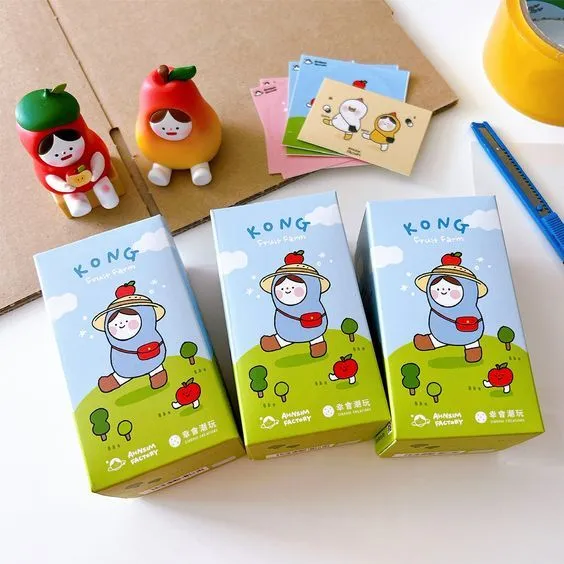
Blind boxes have taken the world by storm. Whether it’s miniature toys, collectible figurines, or mystery merchandise, this trend has captivated people of all ages. But what makes blind boxes so irresistible? Why are people willing to spend money without even knowing exactly what they’re getting? Let’s explore the top 5 reasons why blind boxes are so popular. 5 Reasons Why Blind Boxes Are So Popular 1. The Thrill of Surprise One of the main reasons blind boxes are so appealing is the excitement of the unknown. The moment you open the box, you’re hit with a rush of anticipation what will you get? This element of surprise mimics the feeling of opening a gift or winning a prize, which triggers dopamine in the brain. It’s not just about the product; it’s about the experience of discovery. 2. Collectibility and Rarity Blind boxes often come in a series of collectibles, with some items being rarer than others. This rarity creates a challenge that many find addictive people want to complete the set or find that one rare, limited-edition figure. This taps into the same psychology that drives people to collect stamps, cards, or coins. The more exclusive the item, the more valuable it feels. 3. Social Sharing and Community Blind box collectors often share their unboxing experiences on social media platforms like TikTok, YouTube, and Instagram. These videos gain millions of views, building communities of fans who share tips, trade duplicates, or hunt for specific items together. This social aspect adds another layer of enjoyment, turning a personal hobby into a communal activity. Also Read: What is Blind Box? A Deep Dive Into the Mystery Toy Trend 4. Affordability with a Touch of Luxury Most blind boxes are relatively affordable, making them an easy impulse buy. Despite the low price, the packaging and product design often feel premium. This combination of affordability and perceived value makes blind boxes accessible while still giving buyers the feeling of owning something special. 5. Nostalgia and Emotional Connection For many adults, blind boxes evoke childhood memories like getting toys from vending machines, cereal boxes, or surprise eggs. For younger audiences, they offer new, collectible characters that build emotional attachment. This blend of nostalgia and emotional bonding keeps people coming back for more. The Role of Blind Boxes in Pop Culture Blind boxes aren’t just toys anymore they’ve become collectibles that intersect with fashion, gaming, and even art. High-end designers collaborate with blind box brands to release limited-edition series. In some circles, owning a rare blind box figure is almost like owning a designer handbag or sneaker. This has helped blind boxes move from kid’s toys to adult collectibles. Are Blind Boxes Here to Stay? The blind box trend shows no signs of slowing down. With brands continuing to innovate such as using AR technology, NFT-style digital twins, or app-based rewards the format is evolving to match the digital habits of younger generations. While some critics argue about the ethics of “chance-based” purchases, especially among children, the consumer appeal remains undeniable. Final Thoughts Blind boxes represent a unique mix of mystery, emotion, and excitement. With strong marketing strategies, community appeal, and the psychological reward of “the chase,” it’s no wonder they’ve become a modern obsession. Whether you’re a seasoned collector or someone trying your first box, one thing’s for sure opening a blind box never gets old. If you’re looking to explore premium blind box collectibles or even create a customized series for your brand or event, Switts offers a creative range of gifting solutions that blend surprise with personalization. It’s a great way to add fun, value, and a touch of excitement to every unboxing experience.
What Is Blind Box? A Deep Dive Into the Mystery Toy Trend

In a world where attention spans are short and unboxing experiences matter more than ever, blind boxes have captured the imagination of both consumers and businesses. These mysterious packages combine curiosity, creativity, and collectibility in one compact form making them more than just toys. Whether used for personal enjoyment or as a modern approach to corporate gifting, blind boxes offer a unique way to spark joy, build connections, and leave a lasting impression. What Is a Blind Box? A blind box is a type of collectible toy or product packaged in a way that conceals its contents until it is opened. The excitement and mystery of not knowing what’s inside is a key part of its appeal. Blind boxes are often sold as part of a series, with multiple possible figures or items to collect, some of which may be rare or limited edition. Blind boxes originated in Japan as part of the gacha (or gashapon) culture, where capsule toys were dispensed from vending machines. Over time, the concept expanded globally and evolved into boxed packaging, becoming popular among toy collectors, anime fans, and pop culture enthusiasts. Why Are Blind Boxes Popular? Blind boxes have captured the hearts of collectors and casual buyers alike due to a unique blend of emotional appeal, social interaction, and visual creativity. Here’s a closer look at what makes them so appealing: 1. Surprise Factor At the core of the blind box experience is the element of surprise. Opening a blind box feels like unwrapping a present, the mystery fuels excitement. This uncertainty taps into the human love for suspense and novelty, releasing dopamine and creating a mini emotional rush. It’s a simple but powerful psychological trigger that keeps people curious and eager for the next reveal. 2. Collectibility Each blind box series typically features a full set of themed items or characters. This encourages people to collect the entire lineup, whether for display, personal satisfaction, or the joy of completing a set. Within these collections, certain figures are intentionally made rare, often with specific ratios (such as 1 out of 24 or 1 out of 96). These rare finds, known as “chase” figures, spark a sense of challenge and drive among collectors, increasing the perceived value and excitement of the hunt. 3. Community and Trading The culture around blind boxes often extends beyond the product itself. Collectors tend to share their unboxing experiences, display their collections online, and interact with others in forums or social media groups. These communities make it easier to trade duplicate figures or seek out rare ones, adding a collaborative aspect to the hobby. Trading not only enhances the social dimension but also increases the chances of completing a collection without unnecessary spending. 4. Design and Quality Many blind box items are more than just toys, they’re mini pieces of art. The designs often reflect distinct visual styles, themed aesthetics, or storytelling elements. Each figure is crafted with attention to detail, from facial expressions and textures to vibrant colors and fine finishing. For many collectors, the visual and tactile quality of the figure is just as important as the surprise itself. Whether displayed on a shelf or desk, these items bring charm, style, and personality to any space. Also Read: 10 Innovative Blind Box Ideas for Brand to Boost Engagement How Do Blind Boxes Work? Typically, a blind box product line includes: Boxes can be bought individually or in full sets (often 12 pieces) to increase the chance of getting the complete series. Where Can You Find Blind Boxes? Blind boxes are no longer limited to toy stores or hobby shops, they’ve evolved into creative gift options for various occasions, including corporate events and client appreciation. Whether you’re looking for something fun, unique, or memorable, blind boxes now serve as an innovative twist on traditional gifting. For businesses in Singapore, Switts offers a curated selection of blind boxes designed specifically for corporate gifting. These can be tailored to suit different themes, budgets, and branding needs, making them ideal for company events, giveaways, or employee rewards. Each box delivers an element of surprise that adds excitement to the unboxing experience, perfect for making a lasting impression. If you’re seeking something more engaging than the usual pen-and-notebook combo, blind boxes from Switts can help elevate your gifting game with creativity, quality, and a touch of fun. Are Blind Boxes Just for Kids? Not at all. While blind boxes may have originated with children in mind, many modern designs are created specifically for adult collectors. These include artistic vinyl figures, minimalist desk accessories, and elegantly packaged items that appeal to a more mature audience. The aesthetics, craftsmanship, and collectible value of these items make them highly sought-after, not just as personal keepsakes, but also as conversation pieces. Because of their versatility and appeal, blind boxes are now being used in more professional settings as well. In fact, they’ve become an increasingly popular choice for corporate gifts. The element of surprise adds a playful, engaging twist to traditional gift-giving, making them ideal for client appreciation, employee rewards, or event giveaways. A well-designed blind box can leave a lasting impression, especially when it reflects a company’s creativity and attention to detail. Whether for personal enjoyment or professional gifting, blind boxes offer a unique experience that goes beyond the ordinary. Final Thoughts Blind boxes have transformed the way people experience collectibles and gifts. By blending surprise, creativity, and high-quality design, they offer more than just a product, they deliver an experience. Whether you’re a casual collector, a passionate fan, or a company looking for a unique gifting solution, blind boxes provide a refreshing alternative to the expected. They appeal to all ages, spark curiosity, and encourage meaningful interactions, whether through collecting, trading, or gifting. In the corporate world, blind boxes can be a clever way to show appreciation and create memorable moments, especially when chosen with purpose and thoughtfulness. In the end, the charm of a blind box lies in its ability to surprise, delight,
20 Unique Corporate Gift Ideas in 2025 That Your Clients and Team Will Appreciate!
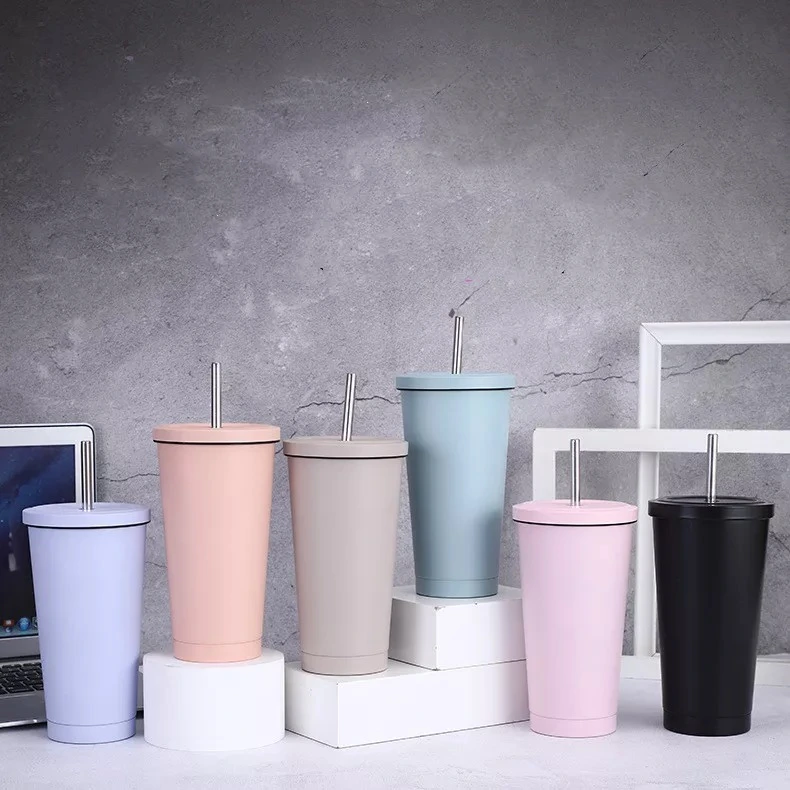
Gone are the days of basic notebooks and cookie-cutter calendars. In 2025, corporate gifting is more than a polite gesture, it’s a strategic move that enhances brand reputation, boosts employee morale, and strengthens client relationships. Whether you’re looking to impress high-value clients, reward your team, or leave a lasting impression at events, choosing the right gift makes all the difference. Here are 20 unique and impactful corporate gift ideas, featuring real product picks from Switts, a trusted Singapore-based gift supplier. 20 Unique Corporate Gift Ideas in 2025 Smart & Tech-Inspired Corporate Gifts 1. Smart Temperature Display Tumbler This insulated tumbler features a touch-sensitive LED display on the lid, showing the exact temperature of your drink in real-time. Made from stainless steel with vacuum insulation, it keeps beverages hot or cold for hours. It’s USB rechargeable and perfect for professionals who value both style and functionality. Custom branding options make it a standout corporate gift for 2025. 2. Wireless Charging Pad A sleek, Qi-compatible wireless charger designed to reduce cable clutter and simplify charging for most smartphones and devices. The non-slip surface ensures devices stay securely in place, while the minimalist design suits any workspace aesthetic. With fast charging support and customizable branding, this is a practical gift that recipients will use daily. 3. Bluetooth Speaker Compact yet powerful, this Bluetooth speaker delivers high-quality sound with up to 8 hours of battery life. Its waterproof design and wireless connectivity make it perfect for indoor and outdoor use, from home offices to weekend getaways. Custom logo printing transforms it into a memorable, versatile gift for clients and employees alike. 4. AI Bluetooth Earbuds These cutting-edge earbuds feature active noise cancellation, AI voice assistant integration, and ergonomic design for all-day comfort. Ideal for professionals attending virtual meetings or commuting, they offer crystal-clear sound quality and seamless device pairing. The charging case is customizable, making this an impressive and functional gift. 5. Digital Notebook This innovative notebook bridges the gap between traditional handwriting and digital storage. Users write on erasable pages, which sync automatically to popular cloud platforms via a companion app. Perfect for environmentally conscious professionals, it encourages productivity without paper waste. Customized covers make it a unique branded gift option. Eco-Friendly & Sustainable Gifts 6. Eco-Friendly Bamboo Tumbler Crafted from sustainable bamboo fiber, this tumbler is lightweight, durable, and biodegradable. Its natural look appeals to eco-conscious recipients, while double-wall insulation keeps drinks fresh. Ideal for companies promoting green initiatives, it can be customized with logos for a stylish sustainable gift. 7. Eco-Friendly Cutlery Set This portable cutlery kit includes bamboo or stainless steel utensils, fork, spoon, knife, chopsticks, and sometimes a straw, all neatly packed in a reusable case. It’s perfect for employees and clients who eat on the go and want to reduce single-use plastics, while your branding adds a thoughtful touch. 8. Eco-Friendly Notebook with Stationery Made from recycled paper and packaged with sustainable pens and sticky notes, this set is both practical and planet-friendly. The sturdy cover is customizable, and the entire kit promotes zero waste, great for businesses committed to sustainability. 9. Eco-Friendly Pen Pens made from recycled or biodegradable materials like wheat straw or recycled plastic offer a subtle yet meaningful way to showcase your company’s green values. They write smoothly and can be branded with eco-conscious messaging for added impact. 10. Eco-Friendly Lunch Box Durable and BPA-free, these lunch boxes are made from eco-friendly materials such as wheat fiber or recycled plastics. Designed for everyday use, they encourage sustainable habits while keeping meals fresh. Customizable branding makes them an appreciated gift for health- and earth-conscious recipients. Also Read: What is a Corporate Gift? How to Impress Clients and Motivate Teams Elegant & Premium Everyday Items 11. Customized Leather Cardholder Made from high-quality genuine or PU leather, these slim cardholders provide a professional and stylish way to carry business cards or IDs. They can be embossed with logos or names, creating a personalized touch that exudes sophistication and utility. 12. Customized USB Drive A practical gift that remains relevant, these USB drives come in creative designs such as wood, leather, or metal casings. Preloading them with digital resources adds value, while branded engraving helps keep your company top of mind. 13. Personalized Tumbler with Straw Featuring a spill-resistant lid and reusable straw, this tumbler is designed for hydration on the go. Its ergonomic design and variety of color options make it attractive, while your logo ensures brand visibility wherever it travels. 14. Customized Luggage Tag Ideal for frequent travelers, these luggage tags are crafted from leatherette or metal and can be personalized with logos or employee names. They add a touch of class to travel gear and make practical gifts that promote brand identity. 15. Portable Table Fan This compact, USB-powered fan is perfect for beating the heat at a desk or during outdoor activities. Its quiet operation and adjustable angles ensure comfort, and subtle branding opportunities make it a functional, appreciated gift in warmer climates. Personalized & Brandable Keepsakes 16. Customized Moleskin Notebook Known for premium paper and classic design, Moleskin notebooks make elegant gifts for executives and creatives alike. With features like elastic closures and ribbon bookmarks, they’re perfect for note-taking and journaling. Custom foil stamping or embossing elevates these to exclusive corporate gifts. 17. Customized Keychain From sleek metal to soft leather or eco-friendly materials, customized keychains offer a budget-friendly yet memorable gift option. They can be shaped or styled to reflect company values and are perfect giveaways for clients or new hires. 18. Customized Plush Bear with T-Shirt Adding a playful, personal touch, these plush bears wear t-shirts printed with your logo or message. Ideal for employee appreciation or event giveaways, they create an emotional connection and memorable brand experience. 19. Personalized Wine Accessories Set A sophisticated gift including corkscrews, stoppers, and foil cutters, presented in an elegant box. Perfect for wine lovers and executives, this set can be laser-engraved with company logos or messages for a refined touch. 20. Eco-Friendly Tote
What Is a Resin Keychain and How to Make It (Step by Step)
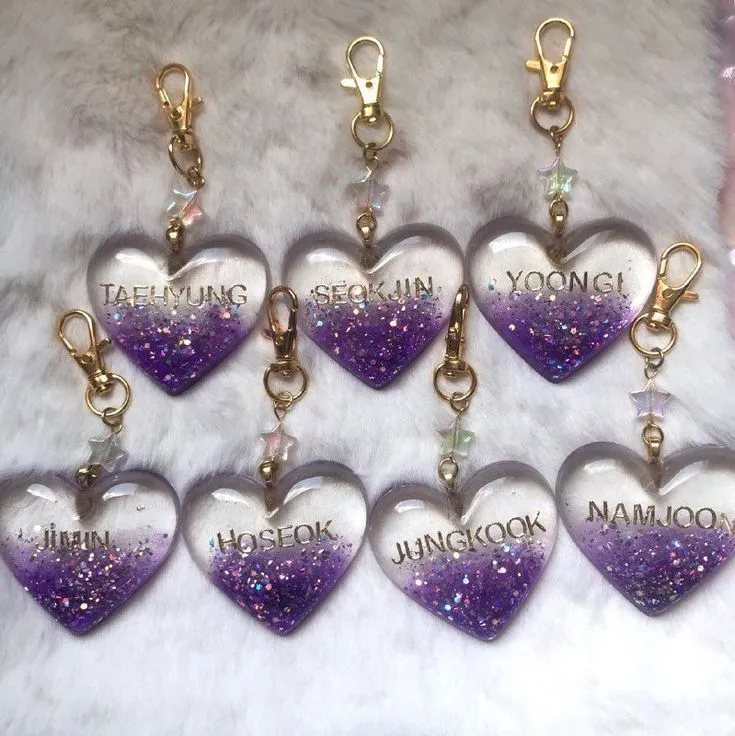
A resin keychain is a small, decorative item made from synthetic resin typically epoxy or UV resin that is shaped, cured, and then attached to a keyring. These keychains are loved for their glossy finish, creative flexibility, and personalized appeal. Whether used as an everyday accessory or given as a handmade gift, resin keychains are fun to make and easy to customize with colors, glitter, dried flowers, or even tiny photos and charms. What Is Resin? Resin is a liquid compound that hardens into a solid, plastic-like material after a curing process. The two main types used in keychain crafting are epoxy resin and UV resin. Epoxy resin requires mixing two components resin and hardener in a specific ratio and then allowing it to cure for several hours. UV resin, on the other hand, cures quickly under ultraviolet light. Both types create a clear, durable, and glass-like finish, perfect for small items like keychains. Why People Love Resin Keychains One reason resin keychains are so popular is because of their visual appeal. They have a glossy, high-end look that mimics glass but is much more resistant to breakage. People love that resin can be tinted, layered, and embedded with various materials. Additionally, these keychains are a perfect blend of creativity and functionality. They’re not just beautiful they’re also durable and useful. On top of that, they make great personalized gifts or small-batch products for craft businesses and online shops. Materials Needed to Make a Resin Keychain To get started with making resin keychains, you’ll need the following materials: Having a clean and well-ventilated workspace is also essential for safety and precision. Step-by-Step Guide to Making a Resin Keychain 1. Prepare Your Workspace and Mold Before handling any resin, set up your workspace in a well-ventilated area preferably near an open window or under a fan. Cover your working surface with wax paper, plastic sheet, or silicone mat to protect against spills, since resin can be very sticky and difficult to clean. Organize all your tools and decorative elements within easy reach. Select a clean silicone mold and ensure it’s free from dust or lint, as even the smallest debris can show through in the final product. If you plan to make multiple keychains, consider laying out several molds in advance. 2. Mix the Resin Wear gloves and a mask for protection, especially when using epoxy resin. Carefully measure equal parts of resin and hardener (typically a 1:1 ratio, but always follow the label directions). Pour them into a mixing cup and stir slowly but thoroughly for 3 to 5 minutes. Stirring too quickly can introduce unwanted bubbles, so be patient. Make sure the mixture becomes clear and uniform, with no visible streaks. If using UV resin, you can skip the mixing step and proceed directly to pouring. 3. Pour the First Layer Pour a small amount of resin into the bottom of the mold just enough to cover the base. Use a toothpick or craft stick to spread the resin evenly across the mold’s surface and into corners. This initial layer helps anchor decorations in place. At this stage, gently pass a lighter or heat gun over the surface to pop air bubbles. Hold the flame or heat source just above the resin (don’t touch it), and move it slowly back and forth to avoid overheating. 4. Add Decorations Now comes the creative part! Use tweezers to carefully place your chosen decorations—such as glitter, dried flowers, alphabet beads, charms, or foil flakes into the resin. Take your time arranging them in a visually pleasing layout. Make sure each item is fully pressed into the resin layer so it stays in place. For 3D objects or layered designs, you may want to add items one at a time with resin in between, letting each layer partially cure before continuing. 5. Pour the Final Layer Once your decorations are arranged, pour another layer of resin to fill the mold to the top. Be careful not to overfill, as resin may spill over and distort the shape. Again, use a heat source to remove surface bubbles. You can also gently tap the mold on the table to help bubbles rise. If desired, you can sprinkle a bit of glitter or apply a top coat pigment for an extra pop of color or shimmer. 6. Cure the Resin Set your mold aside in a level, dust-free area. Cover it with a plastic container or box to protect from airborne particles and allow it to cure undisturbed. Epoxy resin typically requires 24 to 48 hours to fully harden, depending on room temperature and humidity. For UV resin, curing is much quicker simply place the mold under a UV lamp for 2 to 5 minutes or leave it in direct sunlight for up to 30 minutes, rotating it if needed for even exposure. 7. Finish the Keychain Once the resin is fully cured, gently remove the piece from the mold. If the edges are rough or have overflow, sand them down using fine-grit sandpaper or a nail file until smooth. To make your resin piece into a keychain, drill a small hole using a hand drill or pin vise. Screw in a metal eye pin or insert a jump ring through the hole. Attach the keyring or clasp of your choice, and your handmade resin keychain is ready to use, gift, or sell. Also Read: Where to Make Custom Keychain in Singapore Tips for Best Results To get the cleanest finish, stir the resin slowly to avoid bubbles, and always work in layers if you’re using multiple decorative elements. If bubbles persist, using a lighter or heat gun can help bring them to the surface. You can also seal delicate decorations like dried flowers with a thin layer of resin first to prevent them from discoloring. Safety Precautions When Working With Resin Although resin crafting is fun, it’s important to follow safety practices. Always wear gloves and work in a well-ventilated area, especially when working


